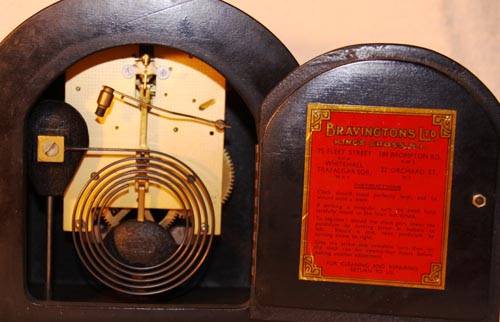Eight day Westminster chime.
The movement of this clock was cleaned, the spring barrels were removed and the springs were taken out for cleaning and re-oiling. There is an unusual hammer set-up on this clock. Note how the striking hammers are suspended below the movement and connected with chains.
The movement was quite a challenge to remove from the case. As you can see, there is not much wiggle room once it is nestled in the case. I recall having to fit the hammer assembly after the movement was in place.
Nice robust clock work and a relatively small case for such a large movement.
This was a relatively easy cleaning project as the spring barrels could be removed without disassembling the plates. One simply pulls the winding arbor out and the barrels can be removed from beneath.






 clock has two small dials at the top of the face for ‘silent & chime’ and ‘fast & slow’ adjustment. The fast and slow adjustment is achieved by a cam that is attached to the back of the ‘fast & slow’ hand. When turned the cam pushes against a lever that raises or lowers the pendulum suspension spring thus raising and lowering the pendulum itself.
clock has two small dials at the top of the face for ‘silent & chime’ and ‘fast & slow’ adjustment. The fast and slow adjustment is achieved by a cam that is attached to the back of the ‘fast & slow’ hand. When turned the cam pushes against a lever that raises or lowers the pendulum suspension spring thus raising and lowering the pendulum itself.










